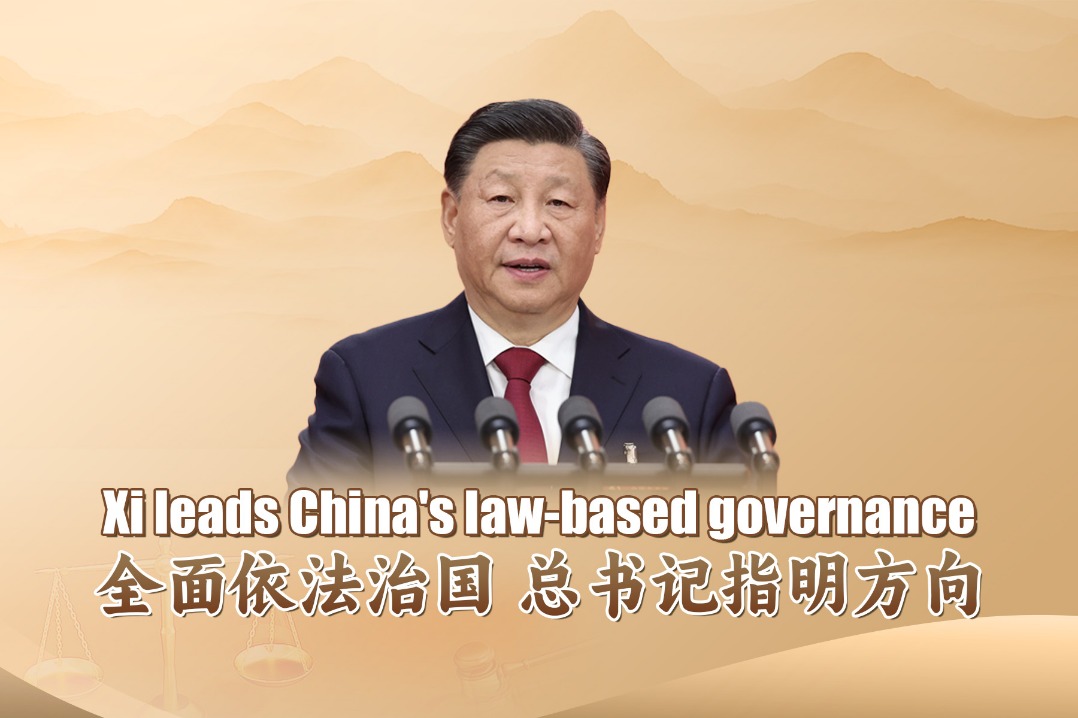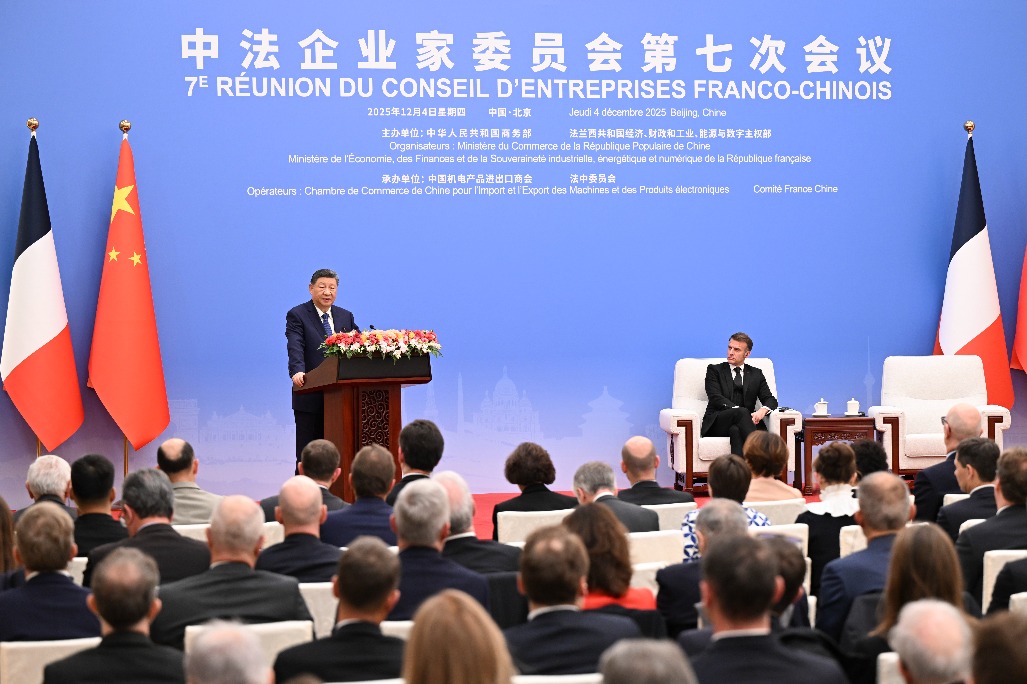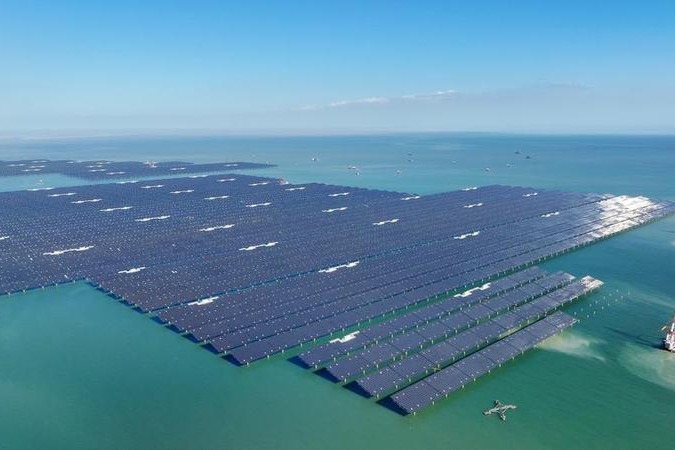Making markets near, far glow with clean power
PV products supplier LONGi Green Energy Technology expands worldwide

LONGi Green Energy Technology Co, one of the world's largest manufacturers of monocrystalline silicon photovoltaic or PV products by market share, will continue to expand the production capacity of its overseas plants and add branches in economies participating in the Belt and Road Initiative.
Opportunities come from many countries' demand for clean energy products that can help in coping with climate change, achieving emission cut targets and saving on energy costs for their residents, said Li Zhenguo, LONGi's president.
The Xi'an-headquartered group operates a manufacturing base with over 4,000 employees in Malaysia. Now, as it moves to the next development stage, LONGi has plans to build branches in other countries, including India, Australia and Brazil, to further compete with other established rivals. It provides solar-related products from raw materials to monocrystalline silicon PV products to clients across both China and the rest of the world.
Li said China's clean energy revolution has generated a decisive influence on the economies participating in the BRI, and the development of PV technology has made clean energy no longer a luxury power source but an affordable commodity.
The PV industrial chain includes five major components, to wit: silicon materials, silicon wafers, cells, modules, and surface power stations. In the past decade, Li said the cost of PV modules has dropped from about 40 yuan ($5.68) per watt to less than 2 yuan per watt with a drop of more than 90 percent.
The cost reduction refers to the cost reduction of all links in the whole industry chain. It can directly reduce the per-watt investment cost of the power station.
Unlike some developed countries which already have mature power generation infrastructure, facilities in many countries or regions are at the early stages of development, which means more opportunities for Chinese solar power manufacturers, Li said.
Thanks to the growing demand of global markets and trade globalization, LONGi built a plant in Kuching city, Malaysia, the company's first overseas manufacturing facility for monocrystalline silicon wafers, in 2016.
The company expanded its operations in Malaysia by building a 1-gigawatt monocrystalline cells plant, at a cost of 840 million yuan in February this year. The move helped the company to cope with rising operational costs and minimize the effect of the ongoing China-US trade dispute.
The group currently ships 60 percent of its solar products overseas, including to the US, India, Japan, Germany and other countries in Europe and Southeast Asia.
Established in 2000 by Li and his partners, LONGi initially focused on technical innovation in the semiconductor sector. It seized the opportunity in raw material supply of silicon wafers and forayed into monocrystalline silicon wafers in the next few years.
Supported by more than 21,000 employees and years of technology evolution, LONGi today has developed a number of business segments from PV power generation equipment to solar power station systems, as well as a monocrystalline industrial chain.
Its sales revenue in 2018 was 21.99 billion yuan. Sales revenue jumped 54.68 percent year-on-year to 22.69 billion yuan in the first three quarters of this year.
Confident about the future prospects of the PV sector, Li went to Paris to attend the 2019 Fortune Global Forum in mid-November. There, he shared his views that PV power plus energy storage will be the mainstream energy supply solutions in the future.
As a representative of China's private companies, Li said China's ongoing industrial upgrading boom will push innovative companies to seek bigger space in the market.
With the global green transformation on, and led by China's acknowledgement that natural environment is an invaluable asset, new energy, especially PV power, has drawn surging attention at both home and abroad.
Along with the evolution of technology, the cost of energy has been dropping accordingly and PV power generation will shake off the impression of being expensive, said Li.
The National Energy Administration issued a notice on the Publication of the Results of the National Subsidy Bidding for 2019 PV Power Generation Projects in July, announcing that based on the principle of fairness, 3,921 projects with total installed capacity of 22.79 GW in 22 provinces, autonomous regions and municipalities such as Beijing and Tianjin have been included in the 2019 national bidding subsidy, initiating the first step of the marketization of China's PV industry.
Li believes that the entire PV industry in China will usher in fully market-oriented opportunities, after achieving the grid parity, without any need for government subsidies. Fewer subsidies in the overseas markets correspond to the market-oriented practice.
"Therefore, as the cost of establishing PV stations becomes much lower, there is no need for subsidies in China, and the world will also enter the growth phase of demand explosion," he stressed.
Agreed Sun Fuquan, a researcher at the Chinese Academy of Science and Technology for Development in Beijing. He said China's ability in cost control, in terms of unit production cost, will continue to provide companies with an advantage if they bid for projects in overseas markets.
He said the terminal electricity prices in many countries remain relatively high, and the development of renewable energy sources such as PV and wind power offer competitive alternatives.
Apart from the energy cost, it is critical to take steps to deal with climate change. China is willing to continue cooperating with global partners to advance emission cuts, climate adaptation and sustainable development. The country will also push for global free trade and a rule-based multilateral trading system, Sun said.


Today's Top News
- Shenzhou XXI crew set for first extravehicular activities
- Xi, Macron attend China-France Business Council meeting
- China expected to prioritize boosting consumption and domestic demand in 2026, expert says
- Xi, Macron jointly meet press
- Xi, Macron attend signing ceremony of cooperation documents
- Xi calls on China, France to expand cooperation in multiple areas






























